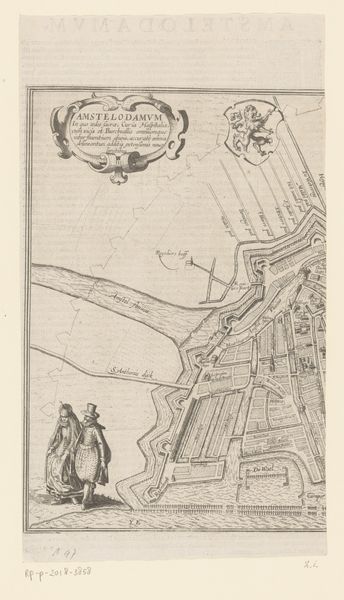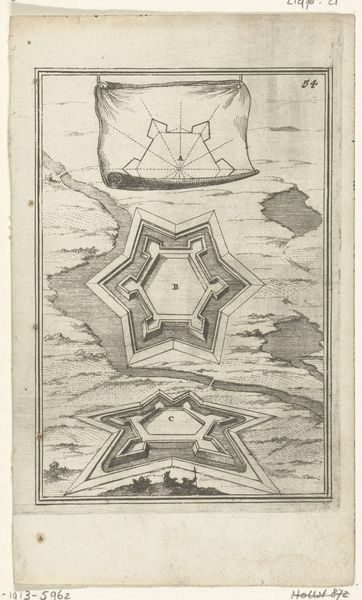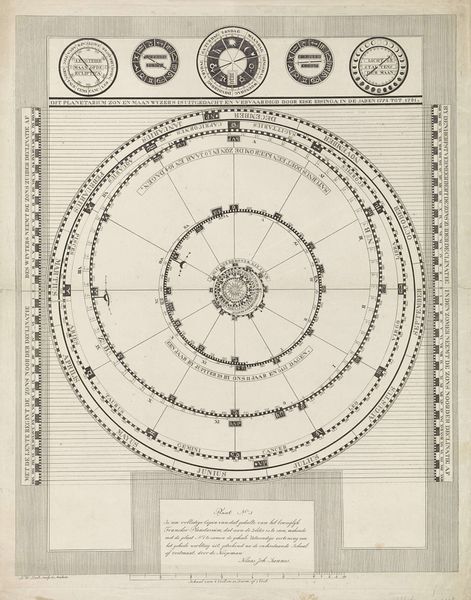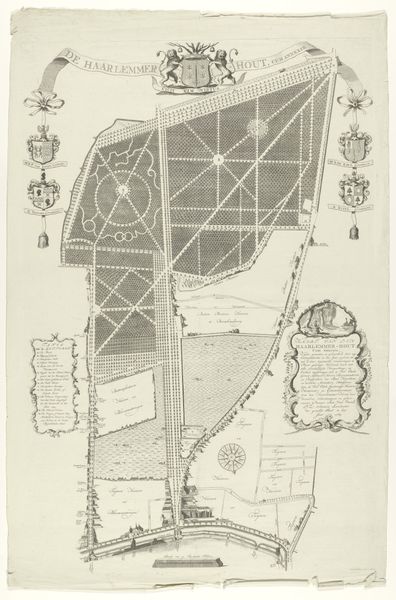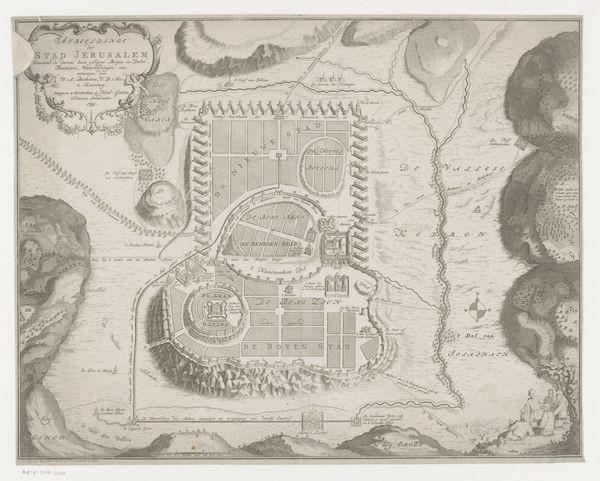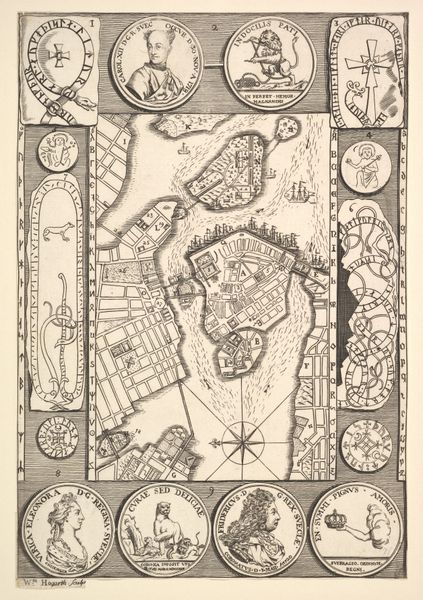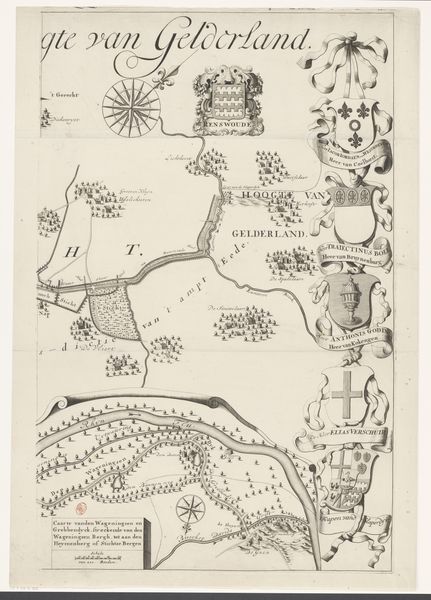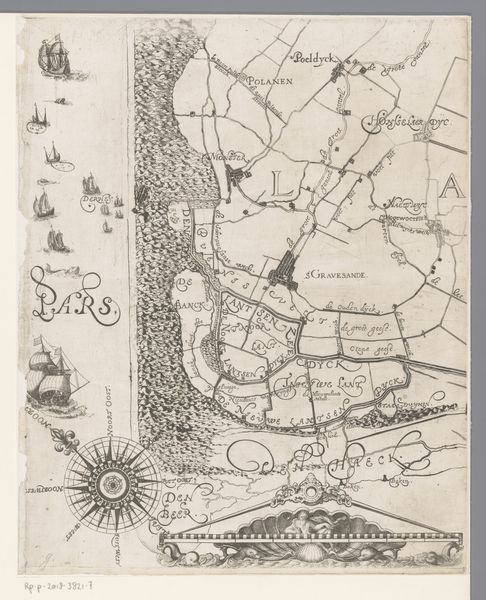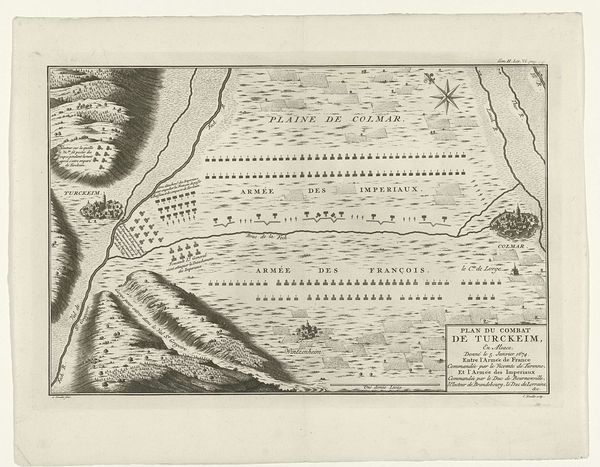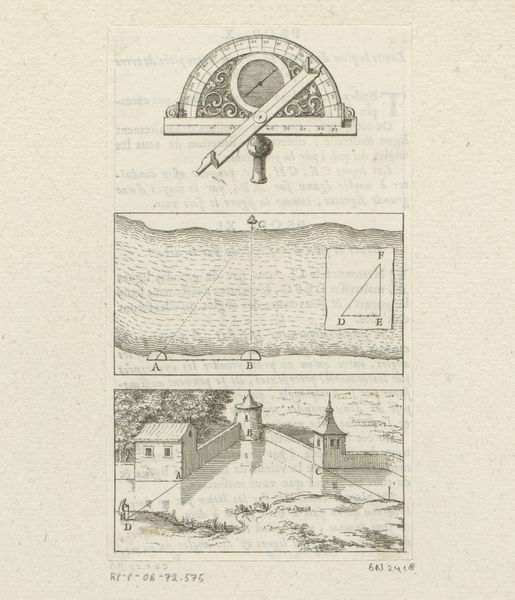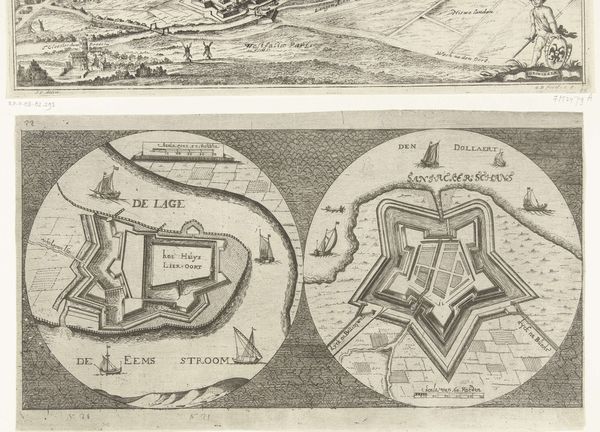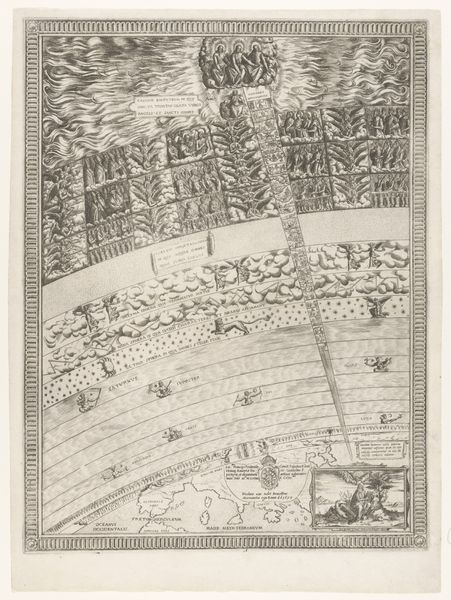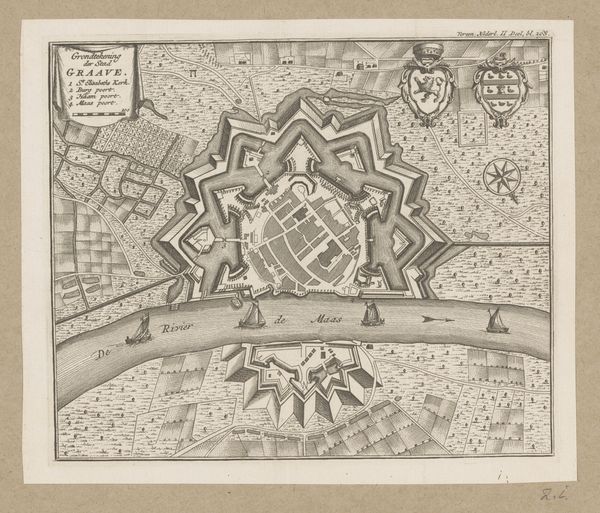
drawing, print, etching, paper, engraving
#
drawing
#
aged paper
#
toned paper
#
homemade paper
#
paper non-digital material
#
baroque
# print
#
etching
#
old engraving style
#
sketch book
#
landscape
#
paper
#
personal sketchbook
#
sketchbook drawing
#
park
#
cityscape
#
storyboard and sketchbook work
#
sketchbook art
#
engraving
Dimensions: height 518 mm, width 380 mm
Copyright: Rijks Museum: Open Domain
Curator: The artwork before us is a print titled "Plattegrond van de uitbreiding van de Haarlemmerhout", or "Plan of the extension of the Haarlemmerhout" made by Hendrik Spilman sometime between 1755 and 1763. It's an engraving on paper. Editor: Immediately, I'm struck by the formality of it all. It’s like looking at a very precise, slightly intimidating geometry lesson applied to nature. Those severe lines and circular forms, they feel very... controlled. Curator: Control is a good word. Baroque landscapes, particularly those intended for the enjoyment of the elite, often sought to impose order and a sense of mastery over the natural world. The formal layout, the geometric divisions within the park extension... they all reflect that desire. The compass at the bottom reinforces that notion of surveying, of imposing a human framework onto nature. Editor: It does also make me think about how spaces like these can feel somewhat cold or artificial, despite the presence of all that greenery. Is it about the loss of wilderness, the sense of being watched or guided even when one expects freedom? Or are we simply admiring the ambition and order behind the design itself? The contrast between the controlled "new" part of the forest, and the naturally sprawling one next to it. It feels symbolic in ways I can't fully grasp yet. Curator: Symbolism is indeed woven into these layouts. Think of labyrinths, formal gardens. They are not just pleasing to the eye. They are designed as metaphors for journeys, tests of will, microcosms reflecting larger social and philosophical structures. This planned park expansion could be seen as a symbolic space, embodying the Enlightenment ideals of reason, progress and civic virtue. Editor: It reminds me of a line from a poem about gardens – "a green thought in a green shade." It's like someone had an idea of order, and planted it deliberately in the earth. Makes me curious about what conversations and social interactions took place here, whether the place actually matched its perfect design. Curator: Absolutely, thinking about how it would be experienced gives a sense of reality to the historical context. In many ways these planned landscapes were a stage for social display as well as individual contemplation. And to appreciate its importance within history of garden design, and city planning is worthwhile. Editor: Looking at the Haarlemmerhout here does invite questions – the impact of these kinds of spaces, but also our connection to environment. Curator: A beautifully balanced perspective, bringing cultural context with individual insight. Thank you. Editor: The pleasure was all mine.
Comments
No comments
Be the first to comment and join the conversation on the ultimate creative platform.
